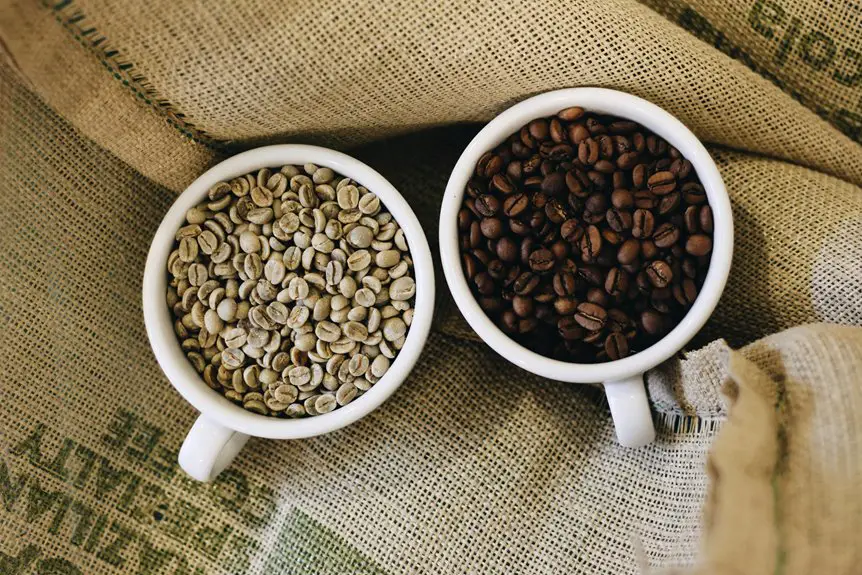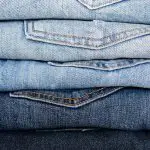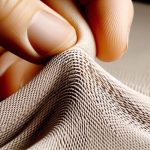When it comes to choosing the most sustainable rayon, Tencel™, Modal, and Viscose each have their merits and drawbacks. You might find yourself wondering which fabric truly stands out regarding environmental impact. While Tencel boasts a closed-loop production process that minimizes waste, Modal and Viscose present challenges that could sway your decision. Let’s explore the nuances of these fabrics to see which one really reigns supreme in sustainability.
Table of Contents
Key Takeaways
- Tencel is the most sustainable option due to its closed-loop production process that minimizes waste and harmful emissions.
- Modal, while softer, is less eco-friendly than Tencel due to its less efficient resource usage in production.
- Viscose has lower sustainability ratings because it often involves harmful chemicals and unsustainable logging practices.
- Certifications like OEKO-TEX and FSC help consumers identify sustainable materials and brands committed to eco-friendly practices.
- Tencel’s superior durability and moisture management make it a practical choice for sustainable fashion compared to Modal and Viscose.
Understanding Tencel, Modal, and Viscose
When it comes to sustainable fabrics, Tencel, Modal, and Viscose often pop up in conversations. You might wonder what sets them apart.
Tencel is derived from sustainably sourced wood pulp, produced through a closed-loop process that recycles water and solvents, making it an eco-friendly option.
Modal, a type of rayon, also comes from wood pulp but focuses on beech trees, offering softness and breathability.
Viscose, while similar to Modal, is typically less sustainable due to its production methods, which can involve harmful chemicals and less efficient water use.
Each fabric has its merits, but if you prioritize sustainability, Tencel often stands out as the top choice.
You’ll find that understanding these differences can guide your eco-conscious decisions in fashion.
Raw Materials: The Source of Sustainability
The sustainability of fabrics like Tencel, Modal, and Viscose hinges on the raw materials used in their production.
Tencel, made from sustainably sourced eucalyptus trees, stands out for its minimal environmental impact. These trees grow quickly and require less water than traditional cotton, making them an eco-friendly choice.
Modal, derived from beech trees, also utilizes renewable resources but can involve more intense farming practices, which may affect local ecosystems.
Viscose, while often derived from wood pulp, can have a more detrimental impact due to unsustainable logging practices.
When you choose fabrics, consider where the raw materials come from and their overall sustainability. Your choice can encourage better practices in the textile industry and contribute to a healthier planet.
Production Processes: A Closer Look
Although many factors contribute to the sustainability of Tencel, Modal, and Viscose, the production processes play an essential role in determining their overall environmental impact.
Tencel uses a closed-loop process that recycles water and solvents, minimizing waste and energy consumption. This method greatly reduces harmful emissions and chemical use compared to traditional methods.
Modal, while also produced through a similar process, may still involve more resource-intensive practices, impacting sustainability.
Viscose, on the other hand, often relies on harsh chemicals and generates considerable waste during production, making it the least sustainable option.
Eco-Friendliness: Evaluating Environmental Impact
As you explore the eco-friendliness of Tencel, Modal, and Viscose, it’s crucial to reflect on their environmental impact throughout their lifecycle. Each fabric has its strengths and weaknesses, especially concerning sustainability.
Here’s a quick comparison to help you understand:
| Fabric | Eco-Friendliness | Biodegradability |
|---|---|---|
| Tencel | High – closed-loop process | Yes – breaks down in soil |
| Modal | Moderate – sustainable sourcing | Yes – compostable |
| Viscose | Low – chemical processes | Yes – but requires proper conditions |
Water Consumption and Resource Management
When you compare Tencel, Modal, and Viscose, you’ll notice significant differences in water usage.
Understanding these differences helps you make informed choices about sustainable resource practices.
Let’s explore how each fabric impacts water consumption and contributes to resource management.
Water Usage Comparison
While many fibers contribute to water consumption issues, the differences between Tencel, Modal, and Viscose highlight the importance of sustainable resource management in the textile industry.
Tencel, produced from sustainably sourced wood, uses a closed-loop process that recycles water and solvents, resulting in considerably lower water usage compared to traditional methods.
Modal also boasts reduced water consumption, but it’s generally less efficient than Tencel.
On the other hand, Viscose often entails more intensive resource use, leading to higher water consumption and potential ecological concerns.
Sustainable Resource Practices
Understanding sustainable resource practices is essential for making informed choices in the textile industry. When it comes to water consumption, Tencel™ stands out due to its closed-loop production process, which recycles up to 99% of the water used. This means less strain on local water supplies and a reduced environmental footprint.
Modal also employs a similar approach but may not achieve the same efficiency in water management. In contrast, traditional viscose production often leads to significant water waste and pollution.
Durability and Performance Comparison
When comparing Tencel, Modal, and Viscose, you’ll want to take into account their strength and resilience, as these factors greatly affect their overall durability.
You’ll also notice differences in moisture management and how each fabric handles wrinkling and maintenance. Understanding these performance traits can help you choose the right fabric for your needs.
Strength and Resilience
As you explore the differences between Tencel, Modal, and Viscose, you’ll find that their strength and resilience can greatly impact their performance in various applications.
Tencel, known for its robust fibers, offers superior strength, making it less prone to wear and tear. This durability enhances its lifespan, particularly in items like activewear and bedding.
Modal, while softer and more luxurious, tends to be less durable than Tencel but still holds up well in everyday use.
Viscose, on the other hand, can be more delicate and may not withstand heavy use as effectively.
If you’re looking for longevity and resilience, Tencel is your best bet, while Modal and Viscose cater to different comfort needs and aesthetic preferences.
Moisture Management
In addition to strength and resilience, moisture management plays an essential role in the performance of Tencel, Modal, and Viscose fabrics.
Tencel excels in this area, as it’s designed to wick moisture away from your skin, keeping you cool and dry. This makes it a great choice for activewear and warm climates.
Modal, while also moisture-absorbent, may not perform quite as well as Tencel, often feeling slightly damp in humid conditions.
Viscose, on the other hand, tends to retain more moisture, which can lead to a heavier feel and longer drying times.
Ultimately, if you prioritize moisture management, Tencel is your best bet, followed by Modal and then Viscose, ensuring you stay comfortable throughout the day.
Wrinkling and Maintenance
Wrinkles can be a significant factor in the overall maintenance of fabrics, and when comparing Tencel, Modal, and Viscose, you’ll find distinct differences.
Tencel is known for its smooth texture and excellent wrinkle resistance, making it easier for you to maintain. You won’t have to worry much about ironing or steaming it after washing.
Modal, while also soft and comfortable, can wrinkle more easily than Tencel, requiring occasional touch-ups.
Viscose, on the other hand, tends to crease quite a bit and can demand more frequent ironing.
If you prioritize low-maintenance fabrics, Tencel is your best bet, while Modal and Viscose may require a little more effort to keep looking sharp.
Choose wisely based on your lifestyle!
Chemical Emissions and Safety
While many consumers prioritize comfort and style, the impact of chemical emissions and safety in fabric production shouldn’t be overlooked.
Consumers often focus on comfort and style, but the environmental impact of fabric production is equally important to consider.
When choosing between Tencel™, Modal, and Viscose, it’s essential to take into account how these materials are produced. Tencel™, made from sustainably sourced wood, uses a closed-loop process that minimizes harmful emissions.
In contrast, Modal and Viscose often involve more toxic chemicals during production, which can affect air and water quality. By opting for Tencel™, you’re supporting a process that prioritizes environmental safety.
Always check for certifications like OEKO-TEX® or FSC to verify the fabric you choose meets safety standards. Making informed decisions about your fabrics can help reduce your overall environmental impact while keeping you stylish and comfortable.
Market Demand for Sustainable Fabrics
As consumers become increasingly aware of environmental issues, the demand for sustainable fabrics is skyrocketing. You’re likely noticing a shift in your shopping habits, with brands highlighting eco-friendly materials like Tencel™, Modal, and Viscose.
This push for sustainability isn’t just a trend; it’s a necessary response to climate change and resource depletion. You want to feel good about your purchases, knowing they’re not harming the planet.
Retailers are listening, often promoting their sustainable fabric lines to cater to your preferences. In turn, this creates a ripple effect, encouraging more companies to adopt eco-friendly practices.
The Role of Certifications in Sustainability
When you’re choosing sustainable fabrics, understanding certification standards is essential.
These certifications not only guide your choices but also promote transparency in sourcing practices.
Certification Standards Explained
Understanding certification standards is essential for making informed choices about sustainable fabrics like Tencel, Modal, and Viscose.
Certifications guarantee that the materials you choose meet rigorous environmental and ethical guidelines. Here are three key certifications to look for:
- OEKO-TEX® Standard 100: This certification guarantees that the textiles are free from harmful substances, guaranteeing safety for both you and the environment.
- FSC (Forest Stewardship Council): This label indicates that the fabric comes from responsibly managed forests, promoting sustainable forestry practices.
- Global Organic Textile Standard (GOTS): This certification focuses on organic fibers and enforces environmental and social criteria throughout the supply chain.
Impact on Consumer Choices
Certifications play a significant role in shaping consumer choices, especially in the domain of sustainable fabrics like Tencel, Modal, and Viscose. When you see certifications like OEKO-TEX or FSC, they signal that a product meets specific environmental and social standards.
This assurance makes you feel more confident about your purchase. You’re likely to choose fabrics that are certified because they align with your values of sustainability and ethical sourcing.
Additionally, these certifications often highlight a brand’s commitment to transparency, making it easier for you to support companies that prioritize eco-friendly practices.
As more consumers demand sustainable options, brands are motivated to pursue certifications, ultimately influencing the broader market towards more responsible choices.
Transparency in Sourcing Practices
How can you truly know where your fabrics come from? Transparency in sourcing practices is vital for making sustainable choices.
Certifications play a significant role in guaranteeing that your fabrics are produced ethically and sustainably. Here are three key certifications to look for:
- OEKO-TEX® Standard 100: This certification verifies that textiles are free from harmful substances, guaranteeing safety for both consumers and the environment.
- FSC (Forest Stewardship Council): This label guarantees that the wood-based fibers come from responsibly managed forests, promoting biodiversity and conserving resources.
- Global Organic Textile Standard (GOTS): This standard guarantees that organic fibers are processed sustainably while adhering to strict environmental and social criteria.
Consumer Preferences and Brand Recognition
What drives your choices when selecting sustainable fabrics? Often, it’s a mix of brand recognition and personal values. You might lean towards brands that prioritize transparency and eco-friendly practices.
Tencel™, Modal, and Viscose each come with their own reputations, influencing your buying decisions. You likely associate Tencel™ with high sustainability standards, while Modal might appeal due to its softness and feel. Viscose, though popular, may raise questions about its environmental impact.
When brands effectively communicate their sustainability efforts, you tend to trust them more. Your awareness of certification labels and eco-friendly initiatives can guide you toward more responsible choices.
Ultimately, aligning your preferences with brands that reflect your values makes your shopping experience not just satisfying, but impactful.
Frequently Asked Questions
What Are the Primary Differences in Texture Among Tencel, Modal, and Viscose?
When you touch Tencel™, it feels like a gentle caress, while Modal wraps around you in silky comfort. Viscose, though soft, might leave you longing for the luxurious embrace of its counterparts. Each has its charm.
How Do Tencel, Modal, and Viscose Impact Garment Care Routines?
When caring for garments, Tencel™ is durable and machine washable, while modal requires gentle cycles to maintain softness. Viscose, though comfortable, can shrink or stretch, so hand washing’s often best for longevity.
Can Tencel, Modal, or Viscose Be Recycled After Use?
Imagine a recycling loop, where Tencel™ and Modal can often be reprocessed into new fibers. While Viscose recycling isn’t as common, check specific brands for their recycling programs to reduce waste effectively.
What Are the Typical Price Ranges for Tencel, Modal, and Viscose Fabrics?
When shopping for fabrics, you’ll find Tencel typically priced higher due to its sustainable production. Modal usually falls in the mid-range, while viscose is often the most affordable option available. Prices can vary considerably based on quality.
How Do These Fabrics Perform in Terms of Dye Retention and Colorfastness?
When it comes to dye retention and colorfastness, Tencel™ typically excels due to its smooth fibers. Modal offers decent performance, while viscose may fade more quickly, especially under harsh washing conditions. Keep this in mind when choosing!
- What Causes Pilling on Bed Sheets and How Can I Avoid It? - June 10, 2025
- How to Prevent Pilling on Blended Fabrics Like Cotton-Poly? - June 10, 2025
- Does Acrylic Fabric Pill Badly? (And How to Manage It) - June 10, 2025







